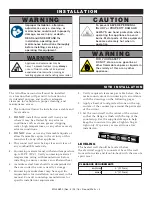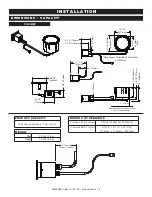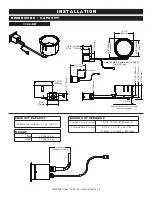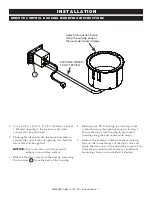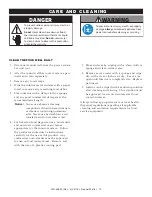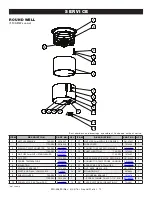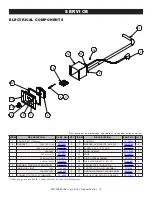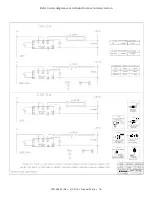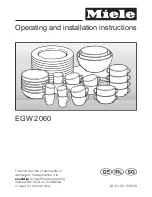
MN-35890 (Rev. 3) 04/16 • Round Wells • 13
Food fl avor and aroma are usually so closely related that
it is diffi cult, if not impossible, to separate them. There
is also an important, inseparable relationship between
cleanliness and food fl avor. Cleanliness, top operating
effi ciency, and appearance of equipment contribute
considerably to savory, appetizing foods.
Most food imparts its own particular aroma and many
foods also absorb existing odors. Unfortunately, during
this absorption there is not a distinction between GOOD
and BAD odors. The majority of objectionable fl avors and
odors troubling food service operations are caused by
bacteria growth. Sourness, rancidity, mustiness, stale or
other OFF fl avors are usually the result of germ activity.
The easiest way to ensure full, natural food fl avor is
through comprehensive cleanliness. This means good
control of both visible soil (dirt) and invisible soil (germs).
A thorough approach to sanitation will provide essential
cleanliness. It will ensure an att ractive appearance of
equipment, along with maximum effi ciency and utility.
More importantly, a good sanitation program provides
one of the key elements in the prevention of food-
borne illnesses.
A comprehensive sanitation program should focus on
the training of staff in basic sanitation procedures. This
includes personal hygiene, proper handling of raw foods,
cooking to a safe internal product temperature, and
the routine monitoring of internal temperatures from
receiving through service.
A controlled holding environment for prepared foods is
just one of the important factors involved in the prevention
of food-borne illnesses. Temperature monitoring and
control during receiving, storage, preparation, and the
service of foods are of equal importance.
The most accurate method of measuring safe temperatures
of both hot and cold foods is by internal product
temperature. A quality thermometer is an eff ective tool for
this purpose, and should be routinely used on all products
that require holding at a specifi c temperature.
Hazard Analysis (at) Critical Control Points (HACCP), is a
quality control program of operating procedures to assure
food integrity, quality, and safety. Taking steps necessary
to augment food safety practices is both cost eff ective
and relatively simple. Additional HACCP information is
available by contacting:
Center for Food Safety and Applied Nutrition
Food and Drug Administration
PHONE: 1-888-SAFEFOOD
www.foodsafety.gov
INTERNAL FOOD PRODUCT TEMPERATURES
HOT
FOODS
DANGER ZONE
40°F TO 140°F
(4°C TO 60°C)
CRITICAL ZONE
70°F TO 120°F
(21°C TO 49°C)
SAFE ZONE
140°F TO 165°F
(60°C TO 74°C)
COLD
FOODS
DANGER ZONE
ABOVE 40°F
(ABOVE 4°C)
SAFE ZONE
36°F TO 40°F
(2°C TO 4°C)
FROZEN
FOODS
DANGER ZONE
ABOVE 32°F
(ABOVE 0°C)
CRITICAL ZONE
0°F TO 32°F
(-18°C TO 0°C)
SAFE ZONE
0°F or below
(-18°C or below)
F O O D S A F E T Y






